Contrasting roles for parvalbumin-expressing inhibitory neurons in two forms of adult visual cortical plasticity
- PMID: 26943618
- PMCID: PMC4786407
- DOI: 10.7554/eLife.11450
Contrasting roles for parvalbumin-expressing inhibitory neurons in two forms of adult visual cortical plasticity
Abstract
The roles played by cortical inhibitory neurons in experience-dependent plasticity are not well understood. Here we evaluate the participation of parvalbumin-expressing (PV+) GABAergic neurons in two forms of experience-dependent modification of primary visual cortex (V1) in adult mice: ocular dominance (OD) plasticity resulting from monocular deprivation and stimulus-selective response potentiation (SRP) resulting from enriched visual experience. These two forms of plasticity are triggered by different events but lead to a similar increase in visual cortical response. Both also require the NMDA class of glutamate receptor (NMDAR). However, we find that PV+ inhibitory neurons in V1 play a critical role in the expression of SRP and its behavioral correlate of familiarity recognition, but not in the expression of OD plasticity. Furthermore, NMDARs expressed within PV+ cells, reversibly inhibited by the psychotomimetic drug ketamine, play a critical role in SRP, but not in the induction or expression of adult OD plasticity.
Keywords: ketamine; mouse; neuroscience; ocular dominance plasticity; orientation-selective habituation; recognition memory; schizophrenia; stimulus-selective response potentiation.
Conflict of interest statement
The authors declare that no competing interests exist.
Figures
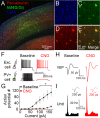
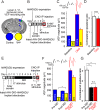
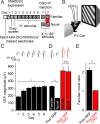


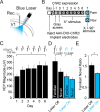

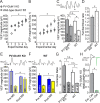
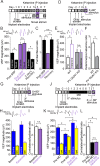


Similar articles
-
Conditional deletion of Mecp2 in parvalbumin-expressing GABAergic cells results in the absence of critical period plasticity.Nat Commun. 2014 Oct 9;5:5036. doi: 10.1038/ncomms6036. Nat Commun. 2014. PMID: 25297674
-
Binocular deprivation induces both age-dependent and age-independent forms of plasticity in parvalbumin inhibitory neuron visual response properties.J Neurophysiol. 2018 Feb 1;119(2):738-751. doi: 10.1152/jn.00386.2017. Epub 2017 Nov 8. J Neurophysiol. 2018. PMID: 29118195 Free PMC article.
-
Distinct Laminar Requirements for NMDA Receptors in Experience-Dependent Visual Cortical Plasticity.Cereb Cortex. 2020 Apr 14;30(4):2555-2572. doi: 10.1093/cercor/bhz260. Cereb Cortex. 2020. PMID: 31832634 Free PMC article.
-
Stimulus-Selective Response Plasticity in Primary Visual Cortex: Progress and Puzzles.Front Neural Circuits. 2022 Jan 31;15:815554. doi: 10.3389/fncir.2021.815554. eCollection 2021. Front Neural Circuits. 2022. PMID: 35173586 Free PMC article. Review.
-
Interneuron epigenomes during the critical period of cortical plasticity: Implications for schizophrenia.Neurobiol Learn Mem. 2015 Oct;124:104-10. doi: 10.1016/j.nlm.2015.03.005. Epub 2015 Apr 4. Neurobiol Learn Mem. 2015. PMID: 25849095 Free PMC article. Review.
Cited by
-
Microglia Elimination Increases Neural Circuit Connectivity and Activity in Adult Mouse Cortex.J Neurosci. 2021 Feb 10;41(6):1274-1287. doi: 10.1523/JNEUROSCI.2140-20.2020. Epub 2020 Dec 30. J Neurosci. 2021. PMID: 33380470 Free PMC article.
-
Stimulus-dependent synaptic plasticity underlies neuronal circuitry refinement in the mouse primary visual cortex.Cell Rep. 2024 Apr 23;43(4):113966. doi: 10.1016/j.celrep.2024.113966. Epub 2024 Mar 19. Cell Rep. 2024. PMID: 38507408 Free PMC article.
-
High-Frequency Visual Stimulation Primes Gamma Oscillations for Visually Evoked Phase Reset and Enhances Spatial Acuity.Cereb Cortex Commun. 2021 Mar 3;2(2):tgab016. doi: 10.1093/texcom/tgab016. eCollection 2021. Cereb Cortex Commun. 2021. PMID: 33997786 Free PMC article.
-
Neural Correlates of Learning Pure Tones or Natural Sounds in the Auditory Cortex.Front Neural Circuits. 2020 Jan 28;13:82. doi: 10.3389/fncir.2019.00082. eCollection 2019. Front Neural Circuits. 2020. PMID: 32047424 Free PMC article.
-
Locomotion Induces Stimulus-Specific Response Enhancement in Adult Visual Cortex.J Neurosci. 2017 Mar 29;37(13):3532-3543. doi: 10.1523/JNEUROSCI.3760-16.2017. Epub 2017 Mar 3. J Neurosci. 2017. PMID: 28258167 Free PMC article.
References
-
- Braff DL, Swerdlow NR, Geyer MA. Gating and habituation deficits in the schizophrenia disorders. Clinical Neuroscience. 1995;3:131–139. - PubMed
Publication types
MeSH terms
Substances
Grants and funding
LinkOut - more resources
Full Text Sources
Other Literature Sources
Molecular Biology Databases

